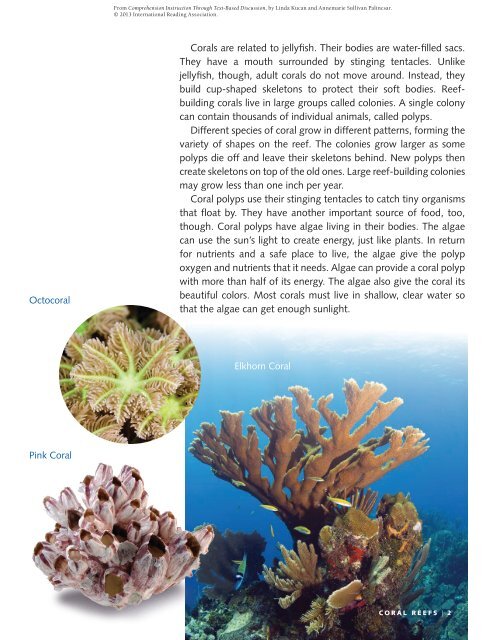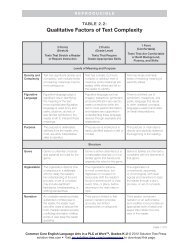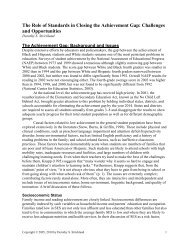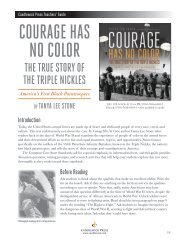Coral Reefs - International Reading Association
Coral Reefs - International Reading Association
Coral Reefs - International Reading Association
Create successful ePaper yourself
Turn your PDF publications into a flip-book with our unique Google optimized e-Paper software.
Octocoral<br />
<strong>Coral</strong>s are related to jellyfish. Their bodies are water-filled sacs.<br />
They have a mouth surrounded by stinging tentacles. Unlike<br />
jellyfish, though, adult corals do not move around. Instead, they<br />
build cup-shaped skeletons to protect their soft bodies. Reefbuilding<br />
corals live in large groups called colonies. A single colony<br />
can contain thousands of individual animals, called polyps.<br />
Different species of coral grow in different patterns, forming the<br />
variety of shapes on the reef. The colonies grow larger as some<br />
polyps die off and leave their skeletons behind. New polyps then<br />
create skeletons on top of the old ones. Large reef-building colonies<br />
may grow less than one inch per year.<br />
<strong>Coral</strong> polyps use their stinging tentacles to catch tiny organisms<br />
that float by. They have another important source of food, too,<br />
though. <strong>Coral</strong> polyps have algae living in their bodies. The algae<br />
can use the sun’s light to create energy, just like plants. In return<br />
for nutrients and a safe place to live, the algae give the polyp<br />
oxygen and nutrients that it needs. Algae can provide a coral polyp<br />
with more than half of its energy. The algae also give the coral its<br />
beautiful colors. Most corals must live in shallow, clear water so<br />
that the algae can get enough sunlight.<br />
Elkhorn <strong>Coral</strong><br />
Pink <strong>Coral</strong><br />
C O R A L R E E F S | 2

















